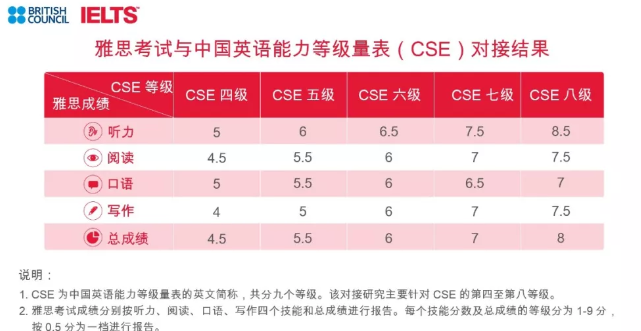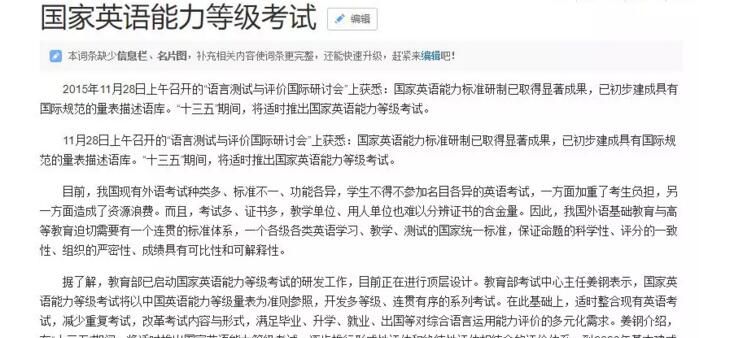2002年英语专业八级考试全真试卷
|
试卷一 (95 min)???
Part Ⅰ Listening Comprehension (40 min) In Sections A, B and C you will hear everything ONCE ONLY. Listen carefully and then answer the questions that follow. Mark the correct answer to each ques tion on your Coloured Answer Sheet.? SECTION A TALK?
Questions 1 to 5 refer to the talk in this section .At the end of the talk you w ill be given 15 seconds to answer each of the following five questions. Now list en to the talk. ? 1. According to the passage, during the 18th and 19th centuries cities we are small in size mainly because ___.?
A. the urban population was stable ?
B. few people lived in cities?
C. transport was backward?
D. it was originally planned?
2. Cities survived in those days largely as a result of ___.?
A. the trade activities they undertook?
B. the agricultural activities in the nearby areas?
C. their relatively small size?
D. the non-economic roles they played?
3. City dwellers were engaged in all the following economic activities EX CEPT ___.?
A. commerce B. distribution C. processing D. transportation?
4. Urban people left cities for the following reasons EXCEPT ___.
A. more economic opportunities B. a freer social and political environment?
C. more educational opportunities D. a more relaxed religious environment?
5. Why did the early cities fail to grow as quickly as expected through ou t the 18th century??
A. Because the countryside attracted more people.
B. Because cities did not increase in number.?
C. Because the functions of the cities changed.
D. Because the number of city people was stable.??
SECTION B INTERVIEW?
Questions 6 to 10 are based on an interview .At the end of the interview you will be given 15 seconds to answer each of the following five questions. Now listen to the interview.?
6. According to Janet, the factor that would most affect negotiations is ___.?
A. English language proficiency B. different cultural practices?
C. different negotiation tasks D. the international Americanized sty le?
7. Janet’s attitude towards the Americanized style as a model for busines s negotiations is ___.?
A. supportive B. negative C. ambiguous D. cautious
8. Which of the following can NOT be seen as a difference between Brazili an and American negotiators??
A. Americans prepare more points before negotiations.?
B. Americans are more straightforward during negotiations.?
C. Brazilians prefer more eye contact during negotiations.?
D. Brazilians seek more background information.?
9. Which group of people seems to be the most straightforward??
A. The British. B. Germans. C. Americans. D. Not mentio ned.?
10. Which of the following is NOT characteristic of Japanese negotiators?
A. Reserved. B. Prejudiced. C. Polite. D. Prudent.
SECTION C NEWS BROADCAST?
Question 11 is based on the following news. At the end of the news item, you wil l be given 15 seconds to answer the question. 11. The news item is mainly about ___.?
A. a call for research papers to be read at the conference?
B. an international conference on traditional Tibetan medicine?
C. the number of participants at the conference and their nationalities?
D. the preparations made by the sponsors for the international conference
Questions 12 and 13 are based on the following news. At the end of the news item 12. The news item mainly concerns ___ in Hong Kong.?
A. Internet centres B. an IBM seminar?
C. e-government D. broadcasting?
13. The aims of the three policy objectives include all the following EXC EPT ___.?
A. improvement of government efficiency B. promotion of e-commerce?
C. integration of service delivery D. formulation of Digital 21 S trategy?
Questions 14 and 15 are based on the following news .At the end of the news item 14. Which of the following records was the second best time of the year b y Donovan Bailey??
A.9.98. B.9.80. C.9.91. D.9.95.?
15. The record shows that Bailey was ___.?
A. still suffering from an injury B. getting back in shape?
C. unable to compete with Greene D. less confident than before Part Three 答案部分
英语专业八级考试历年全真试卷2002??
录音文字材料、参考答案及详细解答
听力原文??
PART Ⅰ LISTENING COMPREHENSION?
SECTION A TALK?
The first area in American urban history extended from the early 17th cent ury to about 1840. Throughout those years the total urban population remained sm all and so with the cities. At the first federal census in 1790, city dwellers made up nearly 5.1% of the total population and only two places had more than 25 ,000 inhabitants. Fifty years later only 10.8% of the national population fell i nto the urban category and only one city, New York, contained more than 250,000 people. Largely because of the unsophisticated modes of transportation, even the more populous places in the early 19th century remained small enough that peop le could easily walk from one end of the city to the other in those days.?
Though smaller in modern standards these walking cities, as it were, perfor med a variety of functions in those days. One was economic. Throughout the pre-mod ern era, this part of urban life remained so overwhelmingly commercial that almo st every city owed its development to trade. Yet city dwellers concerned themsel ves not only with promoting agricultural activities in their own areas, they als o collected and processed goods from these areas and distributed them to other c ities. From the beginning line and increasingly in the 18th and early 19th centu ries, cities served as centres of both commerce and simple manufacturing.?
Apart from the economical functions, the early cities also had important no n-economic functions to play. Since libraries, museums, schools and colleges wer e built and needed people to go there to visit or to study, cities and the large early towns with their concentration of population tended to serve as centres o feducational activities and as places from which information was spread to th e countryside. In addition, the town with people of different occupational, ethn ic, racial and religious affiliations became focuses of formal and informal organi zations which were set up to foster the security and to promote the interests an d influence of each group. In those days the pre-industrial city in America func tioned as a complex and varied organizing element in American life, not as a sim ple, heterogeneous and sturdy union.?
The variety of these early cities was reinforced by the nature of their loc ation and by the process of town spreading. Throughout the pre-industrial period of American history, the city occupied sites on the eastern portion of the the largely under-developed continent, and settlement on the countryside generally followed the expansion of towns in that region. The various interest groups in e ach city tended to compete with their counterparts in other cities for economic, social and political control first nearby and later more distant and larger are as. And always there remained the underdeveloped regions to be developed through the establishment of new towns by individuals and groups. These individuals and groups sought economic opportunities or looked for a better social, political o r religious atmosphere. In this sense, the cities better developed a succession of urban frontiers. While this kind of circumstance made Americans one o f the most prolific and self-conscious city-building peoples of their time, it d id not retard the steadily urbanizing society in the sense that decade by decade an ever larger proportion of the people lived in cities.?
In 1680 an estimated 9 to 10 percent of American colonists lived in urban s ettlements. A century later, that was the end of the 18th century, though 24 pla ces had 2500 persons or more, city dwellers accounted for only 5.1% of the total population. For the next thirty years, the proportion remained relatively stabl e and it was not until 1830 that the urban figure moved back up to the level of 1690.?
In short, as the number of cities increased after 1680, they sent large num bers of people into the countryside and their ratainers. Nonetheless the continuous movement of people into and out of the cities made life in the many but relativ ely small places lively and stimulating. ?
SECTION B INTERVIEW?
M: I’m talking to Janet Holmes who has spent many years negotiating fo r several well-known national and multi-national companies. Hello, Janet.
W: Hello.?
M:Now Janet, you’ve experienced and observed the negotiation strategies used by people from different countries and speakers of different languages. So befor e we comment on the differences, could I ask you to comment, first of all, on what such encounters have in common??
W:OK, well, I’m just going to focus on the situations where people are speakin g English in international business situations. M: I see. Now, not every one speaks to the same degree of proficiency. Maybe tha t affects the situation.?
W: Yes, perhaps. But that is not always so significant. Well, because, I mean, n egotiations between business partners from different countries normally mean we have negotiations between individuals who belong to distinct cultural traditions
M: Oh, I see.?
W: Well, every individual has a different way of performing various tasks in eve ryday life.?
M: Yes, but, but isn’t it the case that in the business negotiation, they must c ome together and work together to a certain extent. I mean, doesn’t that level up the style of, the style of differences or somewhat??
W: Oh, I am not so sure. I mean there’re people in the so-called Western World w ho say that in the course of the past 30 or 40 years, there are a lot of things that have changed a great deal globally, and that as a consequence, national differences had diminished, giving way to some sort of international Amer icanized style.?
M: Yeah, I’ve heard that. Now some people say this Americanized style has acted as a model for local patterns.?
W: Maybe it has, maybe it hasn’t. Because on the one hand, there does appear to be a fairly unified even uniform style of doing business with certain basic pri nciples and preferences, you know, like “time is money”, that sort of thing. B ut at the same time, it is very important to remember the way all retain aspects of national characteristics. But it is the actual behaviour that we will talk a bout here. We shouldn’t be too quick to generalize that to national characteris tic and stylistic type. It doesn’t help much.?
M: Yeah. You mentioned Americanized style. What is particular about American st yle of business bargaining or negotiating??
W: Well, I’ve noticed that, for example, when Americans negotiate with people f rom Brazil, the American negotiators make their points in a direct, sophistical way.?
M: I see.?
W: While Brazilians make their points in a more indirect way.?
M: How??
W: Let me give you an example. Brazilian importers look at people they’re talki n g to straight in the eyes a lot. They spend time on what some people thinks to b e background information. They seem to be more indirect.?
M: Then, what about the American negotiators??
W: American style of negotiating, on the other hand, is far more like that of po int-making; first point, second point, third point, and so on. Now of course, th is isn’t the only way in which one can negotiate and there’s absolutely no reason why t his should be considered as the best way to negotiate.?
M: Right. Americans seem to have a different style, say, even from the British, do n’t they??
W: Exactly, which just show how careful you must be about generalizing. I mean, how about asking you explain how the American negotiators are seen as informal, and so metimes much too open. For British eyes, Americans are too direct even blunt.?
M: Is that so??
W: Yeah, at the same time, the British too. German negotiators can appear direc t and uncompromising in the negotiations, and yet if you experience Germans and Americans negotiating together, it often is the Americans who are too blunt for the German negotiators.?
M: Fascinating! So people from different European countries use different styles , don’t they??
W: That’s right.?
M: OK. So what about the Japanese then? I mean, is their style different from th e Americans and Europeans??
W: Oh, well, yes, of course. Many Europeans nod its extreme politeness of their Japanese counterpart, the way they avoid giving the slightest defense, you know. They’re also very reserved to people they don’t know well. At the first meeti ng s American colleagues have difficulties in finding the right approach sometimes. But then when you meet the Japanese negotiators again, this initial impression tends to disappear. But it is perhaps true to say the average Japanese business person does choose his or her words really very carefully.?
M: So can we say that whatever nationalities you are dealing with, you need to r emember that different nationalities negotiate in different ways??
W: Well it’s perhaps more helpful to bear in mind that different people behave i n negotiating in different ways. And you shouldn’t assume that everyone will be have in the same way that you do.?
M: Right. It is definitely a very useful tip for our businessman who often negot iate with their overseas partners, OK, Janet, thank you very much for talking wi th us.?
W: Pleasure.?
SECTION C NEWS BROADCAST?
News Item 1(For Question 11)? The first International Tibetan Traditional Medicine Conference will be hel d July 15th to 17th in Lasa, capital city of Tibet autonomous region. China’s E thnic Medicine Institute, Tibetan Bureau and Tibetan Medical College will co-hos t the conference. The conference has received more than 500 research papers from China and abroad. The organizing committee primarily selected 290 articles to be discussed at the conference. More than 50 foreign guests from the United States, Russia, Britain, India, Germany, France, Italy and Nepal will attend the meeting . The China mainland has sent a delegation consisting of 250 Tibetan medicine expe rts to the conference.?
News Item 2(For Questions 12-13)? The government of the Hong Kong Special Administrative Region was actively adopting information technology and building an electronic government, a senior Hong Kong official said yesterday. This is an integral part of Hong Kong’s Digi t al 21 Strategy formulated in 1998 to make Hong Kong both a regional and world-wi de internet centre, said Carrion, secretary for information technology and broad casting. She outlined three policy objectives in developing an E-government in H ong Kong at the IBM Asian E-government Executive Seminar. The first policy objec tive is to develop an electronic and peopleless government so as to improve the efficiency, cost-effectiveness and quality of public service. The second is to p romote the wide adoption of E-commence with the government setting a leading exa mple. The third is, through the E-government program, to integrate service deliv ery across motorable departments and agencies.?
News Item 3(For Questions 14-15)? Canadian Olympic 100-meter champion Donovan Bailey showed he was on his w ay back to top form on Tuesday by winning the 100-meters at the athletic mee ting in Switzerland in the time of 9.98 seconds. Despite unfavorable windy co nditions, Bailey recorded the second best time of the year short of the 9. 91 se t by double world champion Moris Greene of the United States on May 13th in Noso ka, Japan. “I would have run 9. 80 if I’d really pushed myself. ” said Bailey , 1 996 Olympic and 1995 world champion. The Canadian has been fighting for form since before the Sidney Olympics, following a long-term injury which resulted in a disappo inting series of starts in the season.?
SECTION D NOTE-TAKING AND GAP-FILLING?
Study Activities in University?
Good morning, today we’ll look at some study activities carried out in universi t y. As we know, students in colleges or universities are expected to master some academic materials that are fairly difficult to understand. However, some of the m find it hard to learn some complex, abstract or unfamiliar subject matters. As a result, a central problem in higher education is how to internalize academic k nowledge, that is how to make knowledge your own. In order to do so we must conv ert knowledge from being other’s knowledge to being part of our own way of thin k ing. Then how are we going to do it? ?What’s? the means available to help us in t h e process of learning? There are four key study activities currently used in hig her education to encourage students to internalize knowledge. They are the ones we are familiar with: writing essays, going to classes and seminars, having indi vidual tutorials and listening to lectures. The four activities are long-establi shed features of our higher education, and they are as important now as they wer e a hundred years ago. Now let’s look at the features of them one by one.?
First, essay writing. The central focus of university work, especially in h umanities, for example in literature, history or politics, is on students’ prod u cing regular essays or papers which summarize and express their personal underst anding of the topic. Then what is good about essay writing? Firstly, writing ess ays forces you to select what you find interesting in books and journals and to express your understanding in the coherent form. Individual written work also pr ovides teachers with the best available guide to how you are progressing in the s ubject, and allows them to give advice on how to develop your strengths or count eract your weaknesses. Lastly, of course, individual written work is still the b asis of almost all assessment in higher education. Written assignments familiari ze you with the form your exams will take.?
The second key activity in colleges and universities is seminars and class discussions. Their role is to help you to internalize academic knowledge by pro viding such contexts so that you can talk about such difficult problems as the treatment of inflation and the unemployment in economic policy or the use of the metaphors in Shakespeare’s plays. Talking is more active than written work. In conversation you know immediately how effective you are in expressing your point and can modify what you are saying in response to people’s reaction s . In addition,a normal program of between 10 to 25 classes covers far more topic s than one subject. Then you can hope to manage your written work. Participating in flexible conversations across this range of issues also allows you to practi se using the broader knowledge gained from other key activities such as lectures
Now let’s take a look at another activity, individual tutorials. Discussi o ns between the teacher and one or two students are used in many colleges as a su bstitute for or supplement to group discussion in classes like those mentioned b efore. Tutorials can range from direct explanation by teachers and are subject to flexible conversational sessions which at their best are very effective in stimu lating students’ mastery of a body of knowledge. The one-to-one quality of the pe r sonal interaction is very important in stimulating acceptance of ideas and produ cing fruitful interaction. In order to make individual tutorial really work, st udents should make good preparation beforehand, and during the tutorial they als o should ask questions to keep the ball rolling rather than let the teachers tal k the vacuum.?
The last activity is lectures. As we all know, lectures play a large part o f most students’ timetable and occupy considerable proportion of teachers’ eff or ts. However the major difficulty with lectures is that they are not interactive like discussions or tutorials. The lecturer normally talks for the whole time wi th minimal feed-back from questions. The science and making notes and the lecture while-con centrating on the argument being developed is often difficult to some students, especially when the argument is very complicated. We have said that lectures are clearly valuable in several specific ways. They can provide a useful overview i n every map, as it were, to familiarize you with the mainland features to be enc ountered during the course. Lectures typically give much more accessible descrip tions of theoretical perspectives in their oral presentations than can be found in the academic literature. Whenever there is a rapid pace of progress in theory or practice, lectures play an indispensable part in letting students know the d evelopment immediately, usually several years before the new material is include d in textbooks. Lastly lectures are often very useful in allowing you to see dir ectly how exponents of different views build up their arguments. The cues provid ed by someone talking in person may seem irrelevant, but these cues are i mportant aids to understanding the subject matter better later.? So far we’ve discussed four study activities and their respective features and roles in higher education. Of course study activities are not limited to jus t these four types. They’re other activities that are equally important, such, a s general reading, project learning, etc. We will cover them during our next lecture.??
答案与详解??
PAPER ONE?
PART Ⅰ LISTENING COMPREHENSION?
SECTION A TALK?
1.答案:B?
【问句译文】根据该短文,十八、十九世纪城市小的原因是什么??
【试题分析】本题为细节理解题。?
【详细解答】谈话首段第二句说“Throughout those years the total urban population re mained small and so with the cities.”由此可见,因为当时城市人口少,所以城市也就 小。?
2.答案:A?
【问句译文】在以前的年代城市生存下来的主要原因是什么??
【试题分析】本题为细节题。?
【详细解答】谈话第二段第三句说“Throughout the pre-modern era, this part of urban life remained so overwhelmingly commercial that almost every city owed its devel opment to trade.”由此可知,经济贸易活动是当时城市生存下来的主要原因,故答案选A 。?
3.答案:D?
【问句译文】下列哪一项不是城市居民的经济活动??
【试题分析】本题为细节题,可用排除法解答。?
【详细解答】短文第二段第四句说“…they also collected and processed goods from the se areas and distributed them to other cities.”因此distribution,processing是包 含在经济活动里,所以应排除选项B和C。commerce意为trade,故可排除A。因此选项D)tran sportation为正确答案。?
4.答案:C?
【问句译文】下列哪一项不属于都市人离开城市的原因??
【试题分析】本题为细节题,可用排除法解答。?
【详细解答】谈话第四段倒数第三句说“These individuals and groups sought economic o pportunities or looked for a better social, political or religious atmosphere.” 这里提到了“更多的经济机会”,“更自由的社会和政治环境”,“更加宽松的宗教环境” ,只是没有提到“更多的教育机会”,故选项C为正确答案。?
5.答案:D?
【问句译文】在整个18世纪,为什么早期城市不能像预期的那样快速发展??
【试题分析】本题为主旨题。?
【详细解答】谈话倒数第二段最后一句说“For the next thirty years, the proportion re mained relatively stable and it was not until the 1830 did the urban figure move d back up to the level of 1690.” 由此可知,人口相对稳定是根本原因,故选项D为正 确答案。?
SECTION B INTERVIEW?
6.答案:B?
【问句译文】根据Janet的观点,影响谈判的主要因素是什么??
【试题分析】本题为细节题。?
【详细解答】当采访者指出商业谈判中可能会遇到一些情况,而且并不是每个人都能达到自己 的谈判目的。Janet回答说“Well, because, I mean, negotiations between business pa rtners from different countries normally mean we have negotiations between indiv iduals who belong to distinct cultural traditions.”由此可知,不同的文化传统是影 响谈判的主要因素,故答案选B。?
7.答案:D?
【问句译文】Janet对美国式的谈判态度如何??
【试题分析】本题为推理题。?
【详细解答】当采访者问到Janet对美国式谈判的态度时,她回答说 “…the American negot iators make their points in a direct, sophistical way.”这里的关键词sophistical 意为“复杂的,老练的”,那么和美国人谈判就必须小心谨慎,故答案选D。?
8.答案:A?
【问句译文】下列哪一项不是巴西和美国谈判者的区别??
【试题分析】本题为细节推理题。?
【详细解答】女士在提到巴西和美国谈判者的特点时说“Brazilian importers look at peop le they’re talking to straight in the eyes a lot. They spend time on what some p eople thinks to be background information. They seem to be more indirect.…Ameri can style of negotiating, on the other hand, is far more like that of point-maki ng; first point, second point, third point, and so on.”,这里是说巴西谈判者谈话 不是很直接,而美国谈判者在谈判之前要罗列很多点。由此可知,巴西和美国谈判者在谈判 时都拐弯抹角,故答案选A。?
9.答案:C?
【问句译文】下列哪一种人谈话最直接??
【试题分析】本题为细节题。?
【详细解答】前面已经说到“…the American negotiators make their points in a direct , sophistical way.”而采访中并没有说英国人或德国人谈话直接,故答案选C。?
10.答案:B?
【问句译文】下列哪一项不是日本人的特征??
【试题分析】本题为细节题,可用排除法解答。?
【详细解答】在谈到日本人的特征时,Janet分别说到“…the average Japanese business p erson does choose his or more really her words very carefully.” 由此可排除选项A .Reserved(矜持的,寡言的);由“Many Europeans nod its extreme politeness of t heir Japanese counterpart…”,可排除选项C . Polite(礼貌的);由“They’re also ve ry reserved to people they don’t know well. ” 由此可排除选项D.Prudent(谨慎的 )。只有选项B.Prejudiced(偏见的)没有提及,故为正确答案。 SECTION C NEWS BROADCAST?
News Item 1?
11.答案:B?
【问句译文】这则新闻主要是讲什么的??
【试题分析】本题为主旨题。?
【详细解答】新闻首句说“The first International Tibetan Traditional Medicine Confe rence will be held…”,由此可知,这则新闻主要是讲一次大型医药会的,故答案选B 。?
News Item 2 ? 12.答案:C?
【问句译文】该新闻主要关注香港哪一方面问题??
【试题分析】本题为主旨题。?
【详细解答】新闻第三句说“She outlined three policy objectives in developing an E- government in Hong Kong at the IBM Asian E-government Executive Seminar.”由此句 可知,该新闻主要关注香港的E-govermnent问题。?
13.答案:D?
【问句译文】三个政治目标中没有下列哪一项??
【试题分析】本题为细节题,可用排除法解答。?
【详细解答】新闻末尾说到三个政治目标问题,即“The first policy objective is to dev elop an electronic and peopleless government so as to improve the efficiency, co st-effectiveness and quality of public service. The second is to promote the wid e adoption of E-commence with the government setting a leading example. The thir d is, through the E-government program, to integrate service delivery across mot orable department and agencies.”这里提到了“to improve the efficiency”,“to p romote the wide adoption of E-commence”,和“to integrate service delivery”, 故可排除选项A、B、C。?
News Item 3?
14.答案:C?
【问句译文】下列哪一项是Donovan Bailey当年排在第二的最好纪录??
【试题分析】本题为细节题。?
【详细解答】新闻第二句说“Bailey recorded the second best time of the year short o f the 9. 91 set…”,由此可知,Donovan Bailey当年排在第二的最好纪录是9. 91秒。?
15.答案:D?
【问句译文】该记录表明Bailey怎样??
【试题分析】本题为推理题。?
【详细解答】解答本题的关键句是Bailey自己说的一句话,“I would have run 9. 80 if I’ d really pushed myself. ”即要是他真正冲出去的话,跑9.80秒是没问题的,而实际记录 为9. 91秒,由此可知,他这次并没有发挥好,故选项B为正确答案。 |








